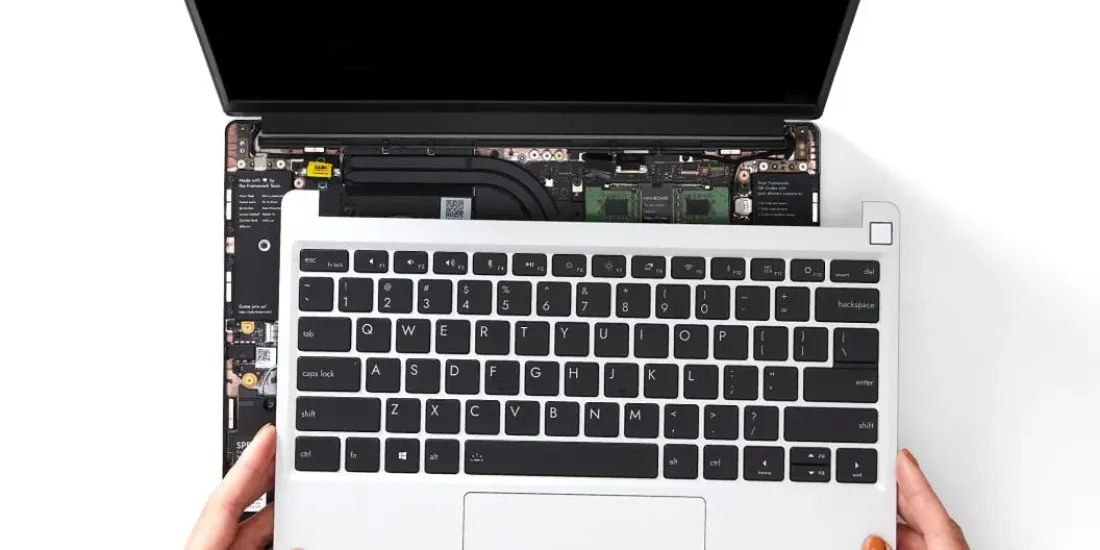In my world as a manager, employees come first. I have often wanted to finally buy a new computer, but when I unpacked the ordered goods, my own wishes were always overwritten by the wide eyes of my colleagues. Each time, I gave up, passed on what had been delivered - and remained stuck with my MacBook "from back then".
Reverse Thinking
When I set up the old computer, I replaced the OSX operating system with the Linux distribution Manjaro. In the process, I became painfully aware for the first time that, in addition to open-source software, hardware also plays a decisive role. The components built into Apple devices are mostly proprietary. Thankfully, people had sacrificed their lives to reverse engineer the initial design of the finished product, thus enabling at least rudimentary support of the interfaces under Linux.
As far as the camera was concerned, the substitute resulted in a significant loss of quality: for years, I was indeed the motivation for many participants in video conferences to "listen to Queen again". My appearance reminded them too much of the legendary second album cover of the British rock band.
Yes, that was not a cool filter. It was the best the driver could get out of the hardware built into the MacBook.

Stephan Luckow in einer Videokonferenz auf seinem MacBook als schwebender Kopf mit dem CMS-Garden-Hut.
Last year, I became aware of the Startup Framework by chance.
"Consumer electronics is broken. We’ve all had the experience of a busted screen, button, or connector that can’t be fixed, battery life degrading without a path for replacement, or being unable to add more storage when full. Individually, this is irritating and requires us to make unnecessary and expensive purchases of new products to get around what should be easy problems to solve."
I immediately liked the philosophy: a laptop for (self-)repair, upgrading and customising. Durable. Future-oriented. Pure sustainability.
Open source thinking
With the desired components, the Framework computer can be purchased both in individual parts and already assembled. As a customer, I have access to all the information, tools, kits and spare parts needed for setup, upgrade and repair. The website has detailed instructions including videos showing each assembly step. Screws are used instead of soldering and glue inside. Thanks to the many selectable modules, the notebook can be adapted to individual needs and configured in a customised way. And you can change and replace them at any time.
Yes, I really had to get one of those! I ignored every puppy dog look from my colleagues. This was mine now. I wanted to make my own experiences with it. I wanted to work with it. No chance. None!
And there it is. The new working device - and the first experiences.
I have never bought such a boring technical device before: It simply works. It feels right. From the keystroke, the display on the screen, the smooth installation of Manjaro, the slim design and the weight. It is a lightweight.
Do it yourself
Supplied in a well thought-out package with the Framework laptop, the interchangeable expansion cards for different applications and a screwdriver with T5 screw drive. ONE! Anyone who has ever had to replace the battery on a MacBook has an idea of what ONE tool means.
Since I had pre-ordered the DIY Edition version, my first act was to open the case. Lovely details also awaited me "under the bonnet".
After installing memory and storage, the installation based on Arch Linux went smoothly. The 64 GB RAM is currently exaggerated. In everyday life, I have never exceeded a RAM requirement of 20 GB. Since I have two 32 GB bars installed, I can put one of them into a next framework laptop. The team members had already signalled their interest ;)
As a start-up, Framework Computer Inc is doing a lot right. What is currently missing: a ticket system - and a proper billing workflow. Especially the latter will make one or two orders by companies impossible. There are already articles on this in the knowledge base.
PS: Unfortunately, I will have to do without my beloved "Queen filter" from now on.



